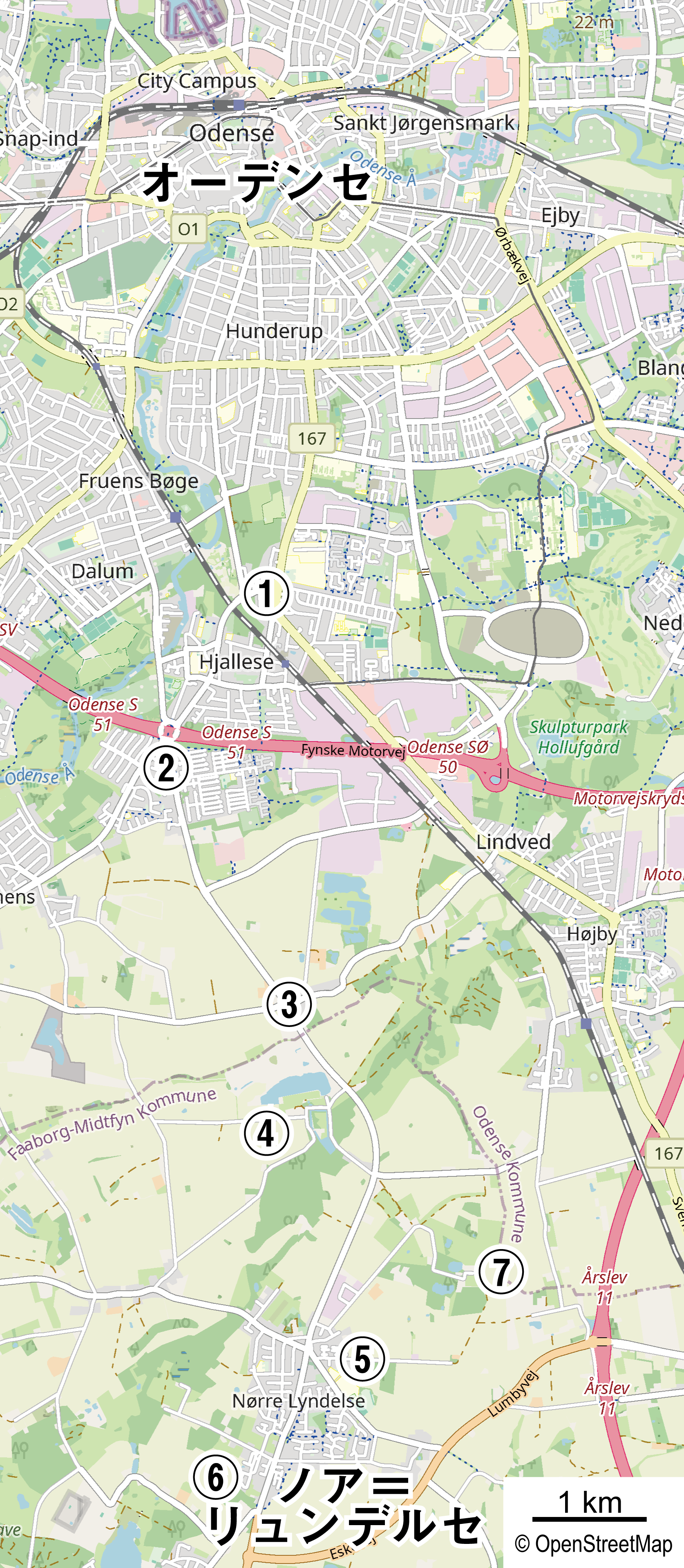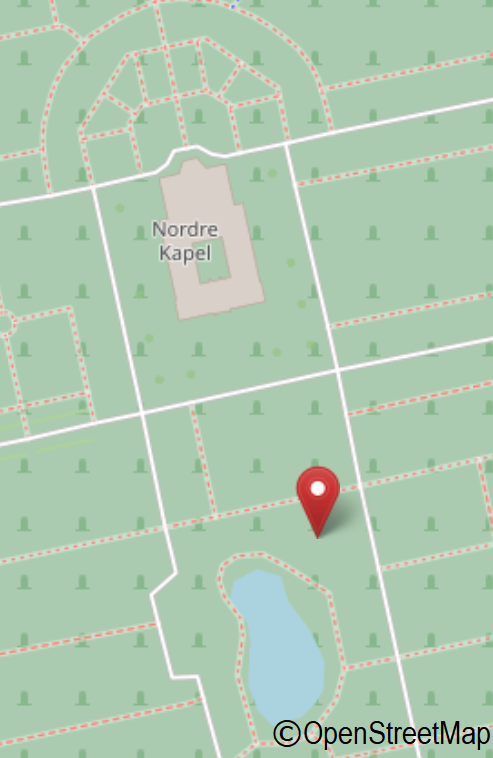A Visit to Odense and Copenhagen: In Search of Carl Nielsen’s Funen Childhood
Nielsen is a composer who stands firmly on the ground. He is neither a court musician nor a salon musician. He has absorbed the essence from the soil, history, and culture of Denmark, a country that became a dairy nation in modern times, and has grown melodious folk-like melodies that bloom into simple yet impressive masterpieces that people can hum. Carl Nielsen, who composed music that is light, simple, and strikingly emotional, is a composer that Denmark is rightly proud of and has secured an unshakeable position as a national composer.
Yoichi Nagashima (Nagashima 2015, 2)
As Yoichi Nagashima (Danish literature scholar and professor at the University of Copenhagen) stated, Nielsen’s music stands on the rich soil of Denmark. Nielsen’s autobiography My Childhood (original title in Danish »Min Fynske Barndom«, literally “My Funen Childhood”), published in his later years, is filled with detailed and emotional memories of his boyhood. Despite a life that was not wealthy, he continued to hold hope, enjoyed daily events, became interested in various things through encounters with variety of people, and sometimes mourned the loss of acquaintances and family members. This autobiography conveys Nielsen’s rich sensitivity and shows that his musicality was greatly nurtured by his daily life in his hometown.
The author thought that, to truly understand Nielsen’s music, one must tread the soil of Odense where he spent his boyhood. In May 2024, the author visited places related to Nielsen in Odense and Copenhagen.
Disclaimer: The information below is based on the circumstances at the time of the visit. The author accepts no responsibility for any consequences resulting from the use of this information.
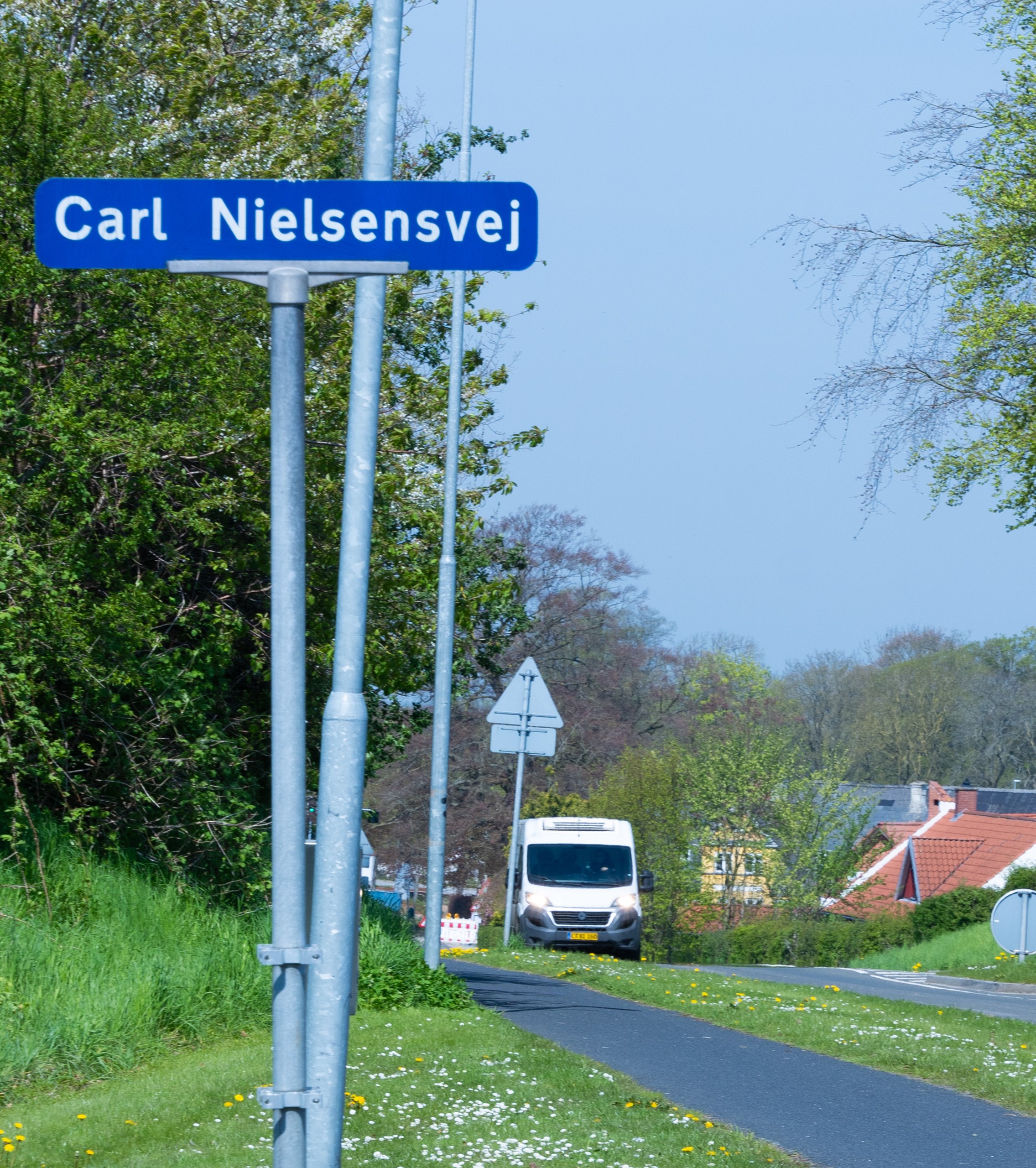
“Carl Nielsen Street”, near the elementary school Nielsen attended
To Odense
From Japan, via Amsterdam, it takes 18 hours to reach Copenhagen Airport (no direct flights). A direct high-speed railway from the airport takes one and a half hours, crossing through an undersea tunnel and a bridge to arrive in Odense. Denmark’s territory mainly consists of Zealand Island, where the capital Copenhagen is located, Jutland Peninsula on the Eurasian continent where the second city Aarhus is located, and Funen Island. Odense is the largest city on Funen Island and the third-largest city in Denmark.
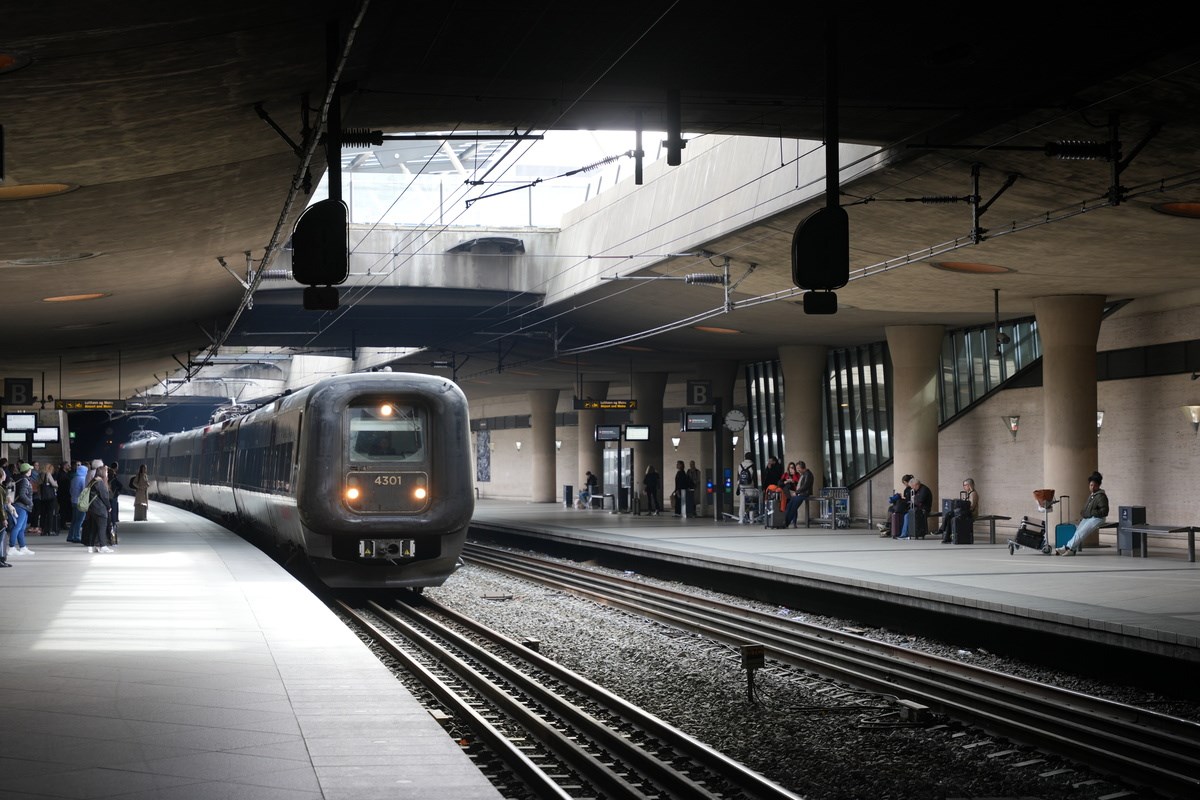
High-speed train arriving at the airport station
Carl Nielsen Museum
A 15-minute walk from Odense Station, passing by trams, you reach a cultural district centred around a concert hall and Andersen Museum, where the Nielsen Museum is located. The museum has two floors. The first floor has video exhibits about Nielsen’s life and works. On the second floor, you can see items related to Nielsen’s life from boyhood to later years (such as the violin he played as a child and medals and certificates he received in his heyday), while listening to corresponding works from each period (Symphonies except No. 2 and No. 4, “Alldain” Suite, and piano pieces, etc.). According to information on the internet, around 2010, there was an exhibit recreating Nielsen’s residence in Copenhagen, but the current exhibits differ as described above.
With the ticket from the Nielsen Museum, you can also enter the childhood home mentioned later, so it’s better to visit here first. Additionally, if you have a ticket for the Andersen Museum nearby, you can purchase a ticket for the Nielsen Museum at half price (not vice versa). It was free to enter around 2010, but it is now paid.
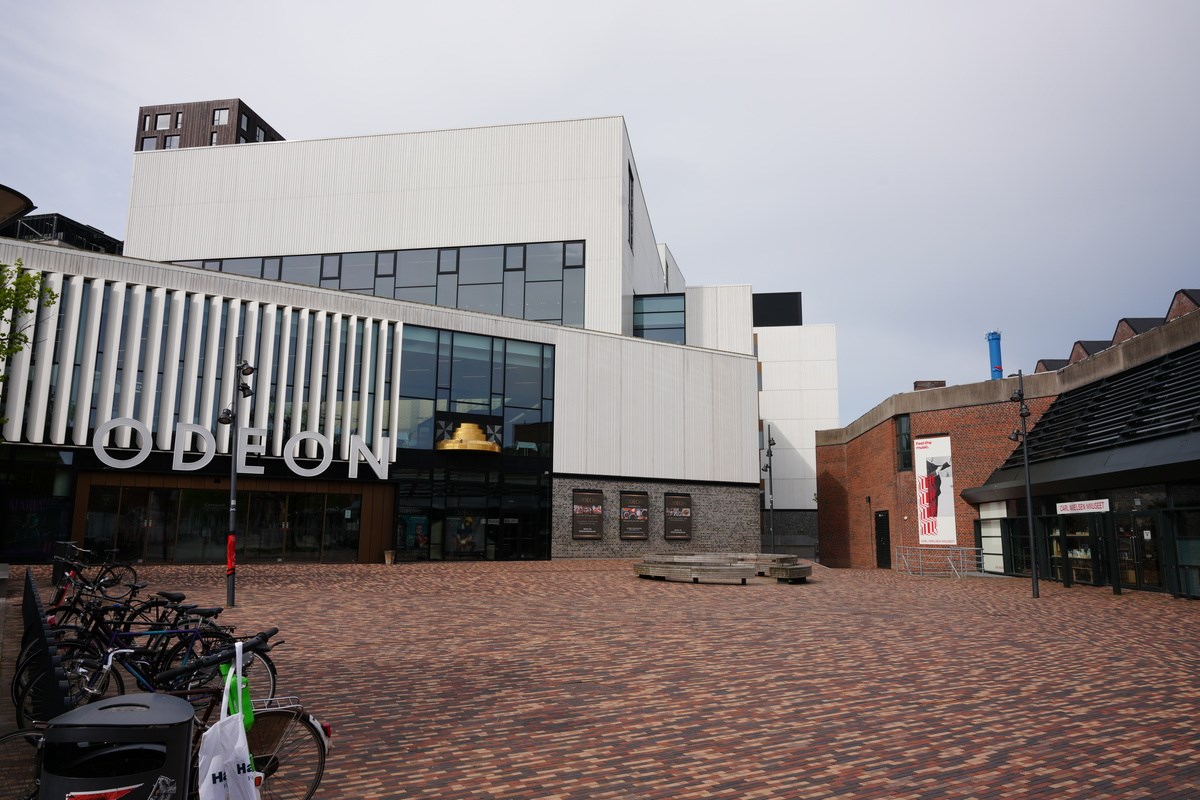
Concert hall called Odeon (left) and Carl Nielsen Museum (right)
From Odense to Nørre Lyndelse
It was about 6 kilometres from Sortelung to Odense, but I never felt tired for a moment. Mother carried a basket on her arm, holding my hand, but I would sometimes run ahead, sit by the roadside and rest, and we would eat our lunch together.
Odense is the town where Nielsen spent his years from around 14 to 19. Before that, he spent his earlier boyhood in Nørre Lyndelse, a small town with a population of around 1,000, about 10 kilometres south of Odense. The young Nielsen often walked between Odense and Sortelung or Nørre Lyndelse, so to retrace his steps, the author also walked, taking about 5 hours. Along the way are interesting facilities such as Odense University, the natural park, overpasses with railroads, the zoo, a highway, and suburban residential areas.
After heading about 8 km south from the city centre, you reach the edge of Odense city. From there, vast farmlands stretch endlessly on both sides of the single road. The smell of soil and manure, probably the same as what young Carl might have smelled, wafts from the nearby canola fields and pastures right next to the road. That smell evoked a natural simplicity in the author, reminiscent of Nielsen’s Symphony No. 1 and Symphony No. 3.
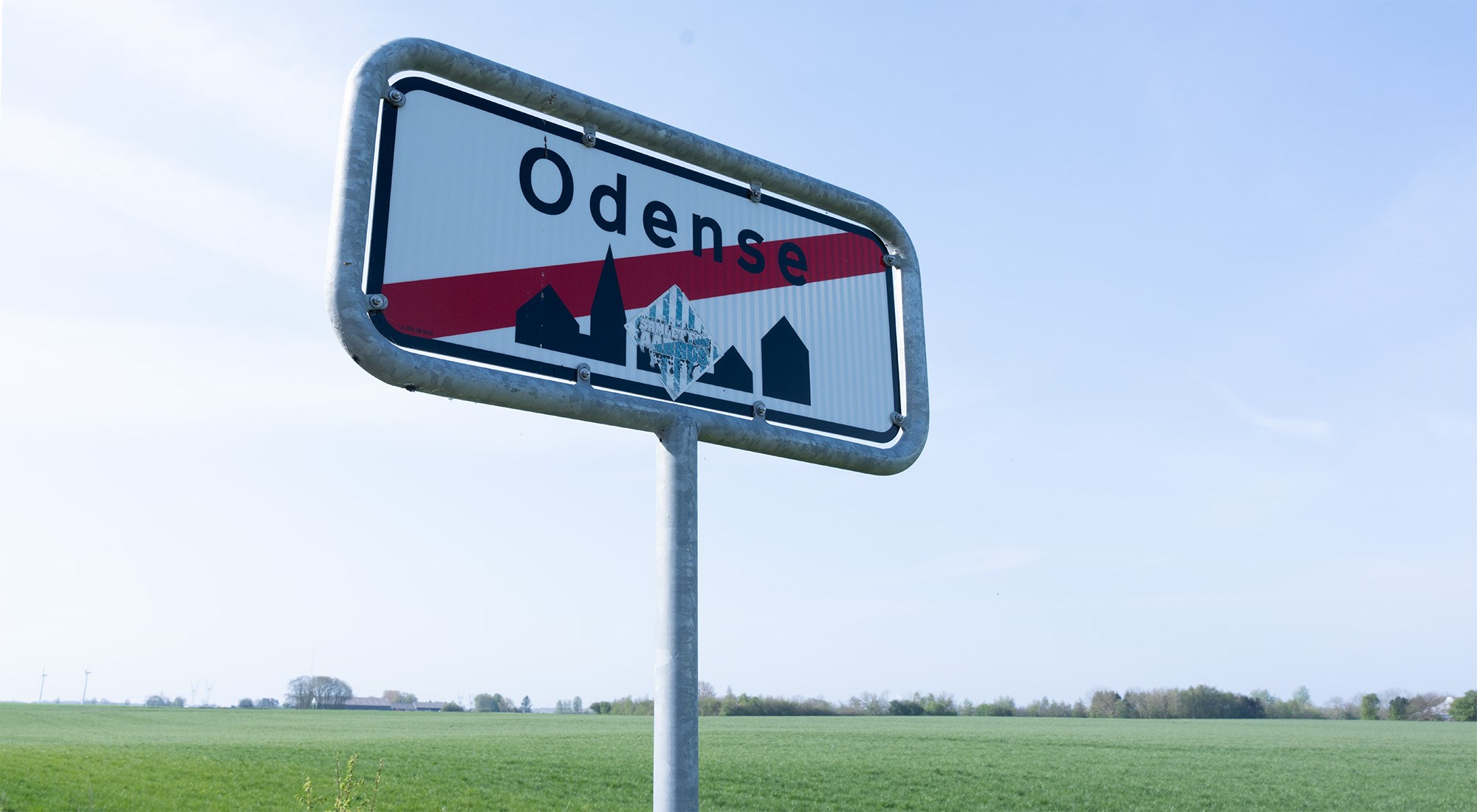
Sign indicating the end of Odense city

Bramstrup Farm
I worked at Bramstrup Farm during the summer and early autumn vacation. I was probably 8 or 9 years old. Every morning, I would go to the farm early and walk to the pond, herding a large group of geese.
Bramstrup Farm is located about 10 km south of Odense city and about 6 km north of Nørre Lyndelse. In Nielsen’s boyhood, it was a central presence overseeing the surrounding small farms. Nielsen’s neighboring farms also belonged to Bramstrup Farm, and Nielsen himself sometimes went there to help. Even today, it remains a large farm with vast lands and large warehouses.
By chance, the author met the farm owner who appeared in a farm vehicle and had a conversation with him. He said that his grandfather often played with Nielsen and that the building in the photo was built in 1847 (Nielsen was born in 1865), meaning that Nielsen had indeed frequented this building.

Sign near the entrance of Bramstrup Farm
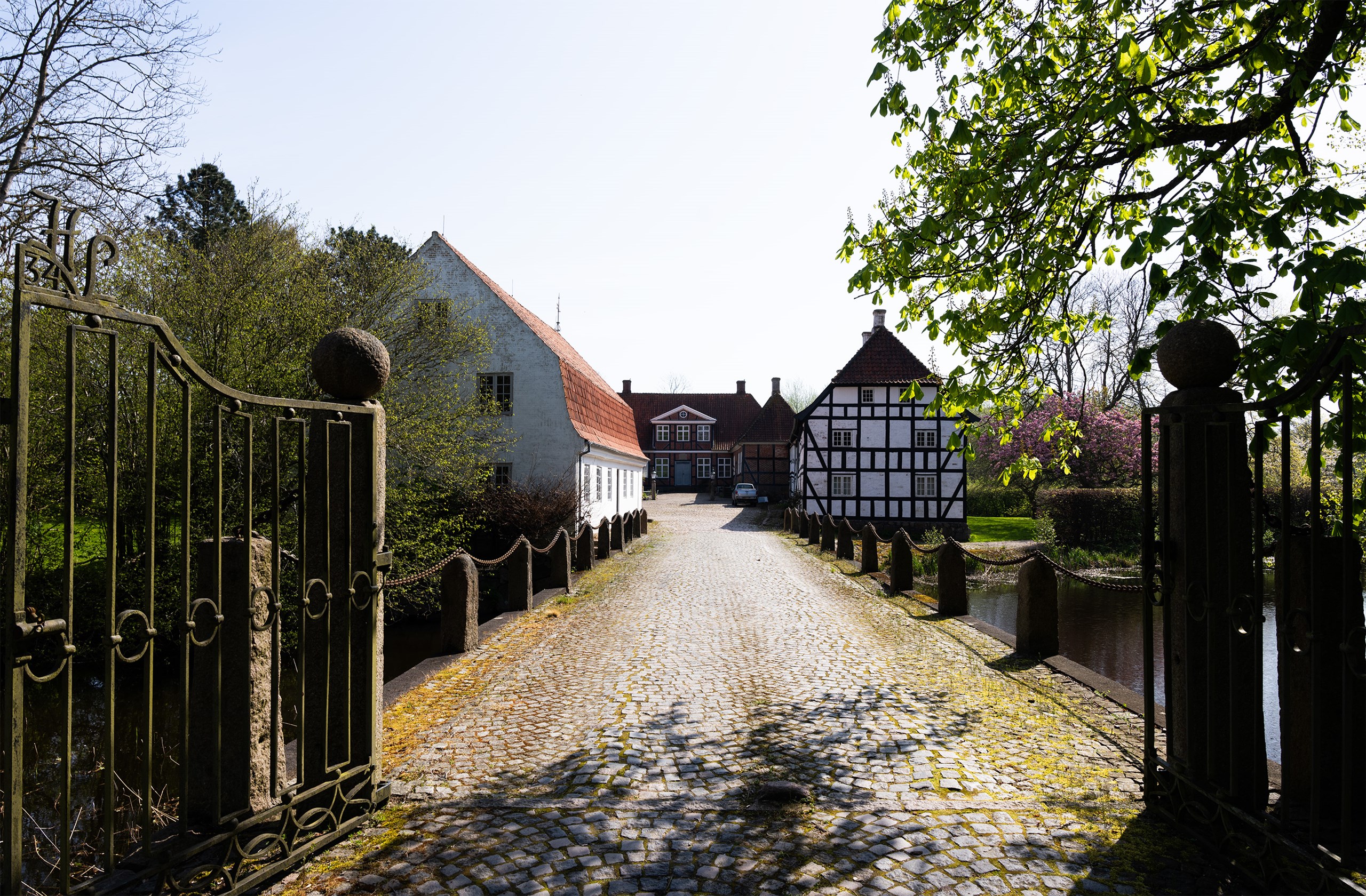
Central buildings of Bramstrup Farm
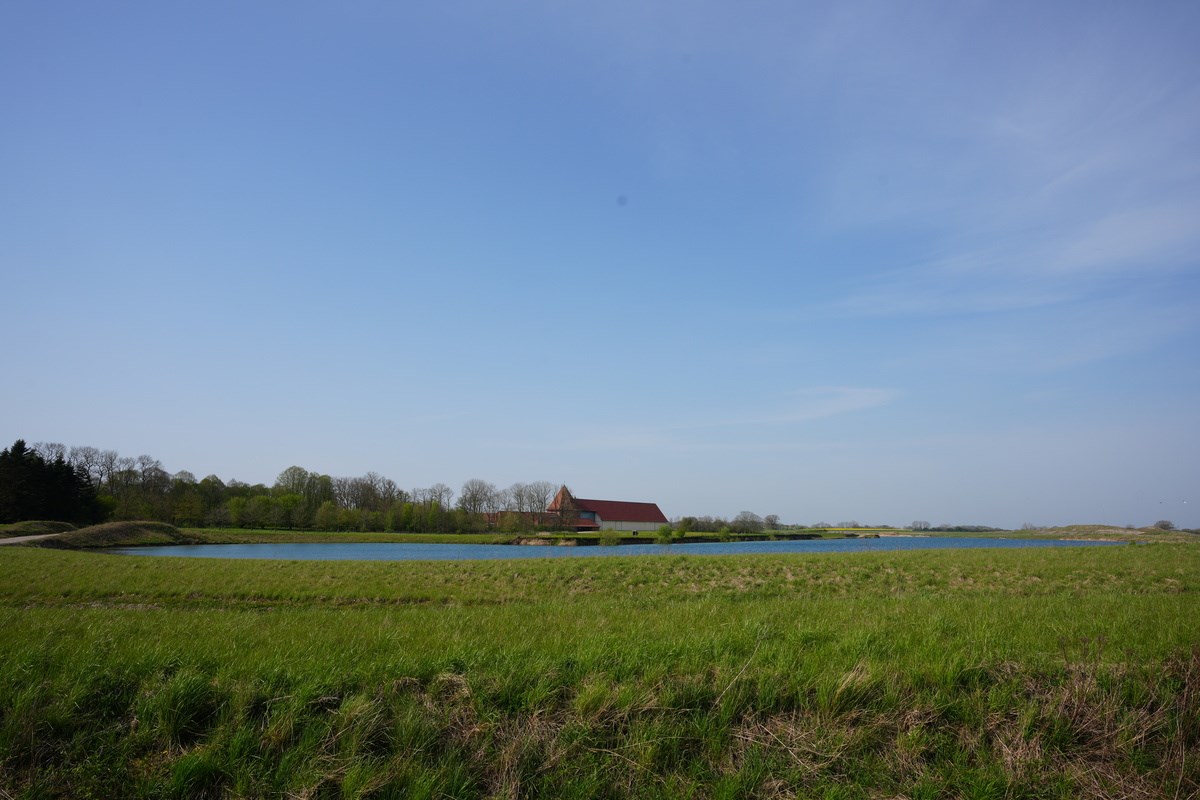
Bramstrup Farm
Nielsen’s Childhood Home
We really moved into that bright and sunlit house full of joy.
After walking for another two hours from Bramstrup Farm, passing by the school Nielsen attended and traversing the small town of Nørre Lyndelse from north to south, you will find Nielsen’s childhood home on the outskirts of the town. Though it was not a large house for a family with many children, it was a house that Carl’s father had determinedly moved into, and it held many memories for Carl. (A photo taken in later years shows Carl visiting this house with his brother Albert.)
Inside, the layout from that time has been recreated, and there are exhibits about the Nielsen family. Some of the furniture, such as the wardrobe, sofa, and cabinet, are the very items used by the Nielsen family.

Entrance of the town of Nørre Lyndelse
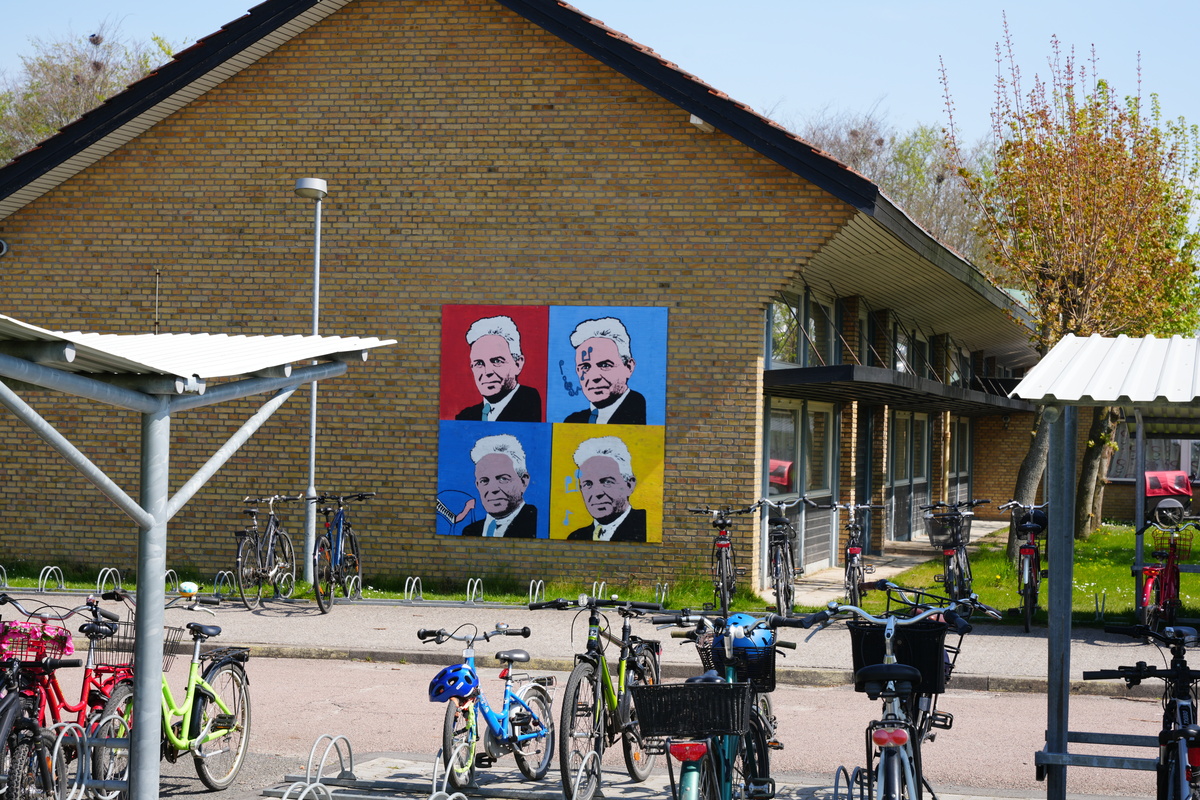
The elementary school Nielsen attended (now called Carl Nielsen skolen)
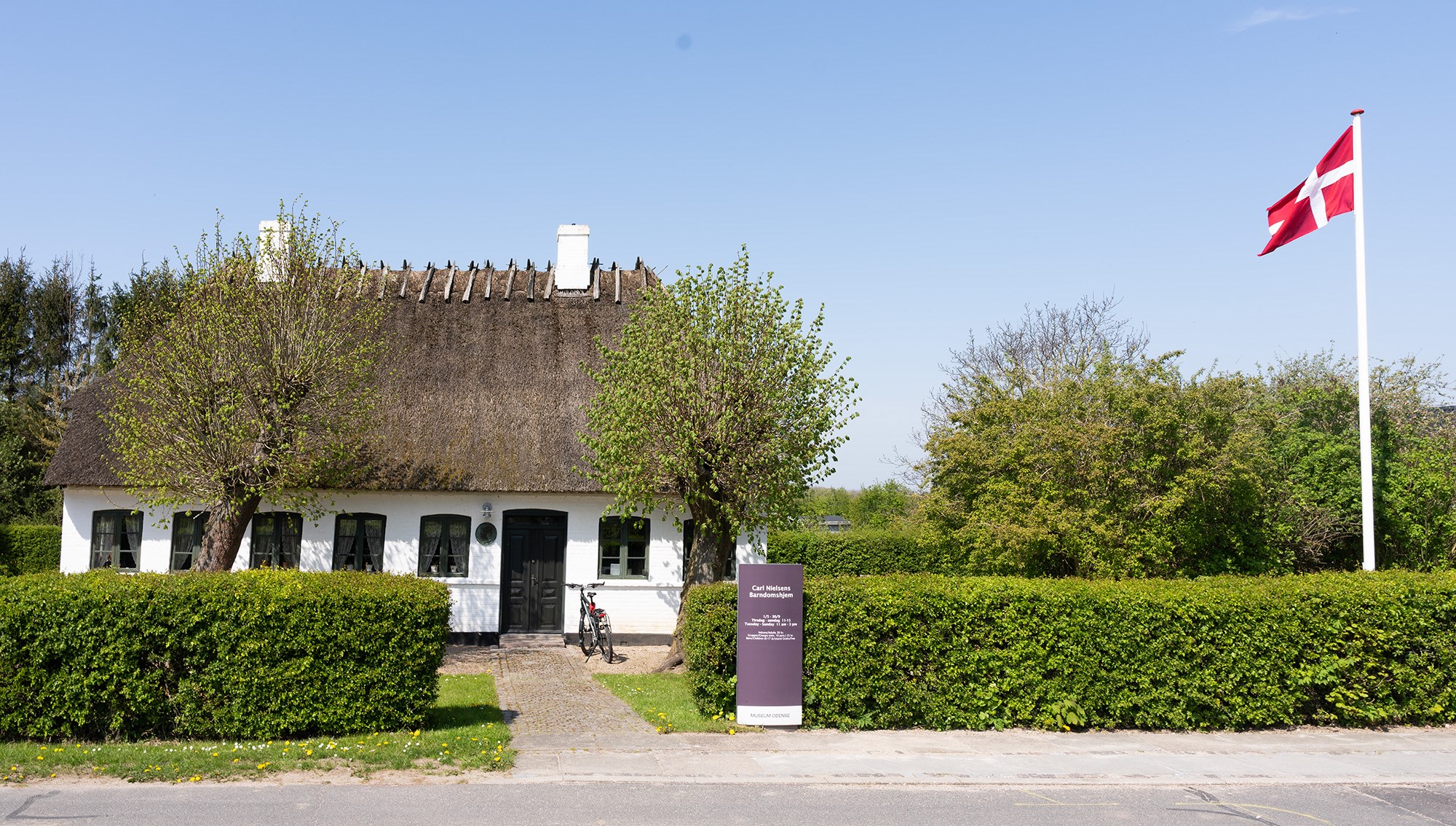
Nielsen’s Childhood Home
Nielsen’s Birthplace Site
The house where I was born stood in the middle of a field. Although it was a field, it was an area of grassland that had been left uncultivated for many years and was rarely plowed. Even if plowed, it quickly reverted to grassland. There was no road for carriages to the house, only two small paths.
Before moving to the Childhood Home, the family lived in another house, sharing it half with another family. This house is Carl’s birthplace and was located in Sortelung, a small hamlet near Bramstrup Farm, north of Nørre Lyndelse.
When the author passed by the vicinity on the outbound journey, no signs indicating Sortelung but only a large industrial area nearby could be found, so he thought that the birthplace site had disappeared with the redevelopment of the farmland. However, thanks to a guide at the Childhood Home, he could find the exact location of the birthplace.
At the birthplace site, there are a display board, a monument, and a rest area, with the monument inscribed “Here stood the birthplace of Carl Nielsen.” In fact, the exact birthplace was about 25 meters behind the monument, now a vast pastureland where horses roam. The landscape around the birthplace, with its endless meadows and a distant pond where birds rest and drink, probably a daily sight for young Carl, was very impressive, and stepping on this land was a deeply emotional experience.
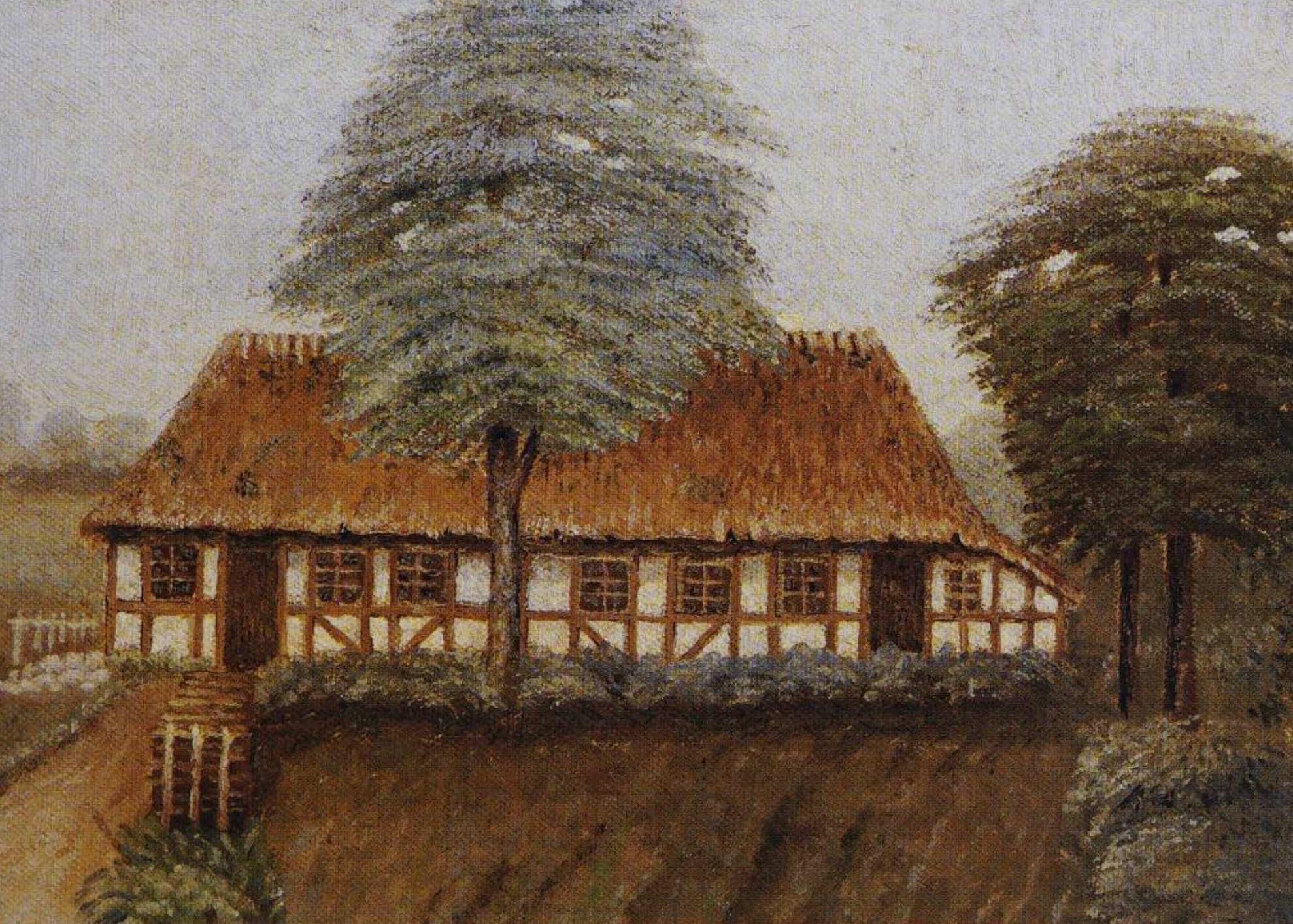
Nielsen’s Birthplace. Drawn by his brother Albert later based on memory.
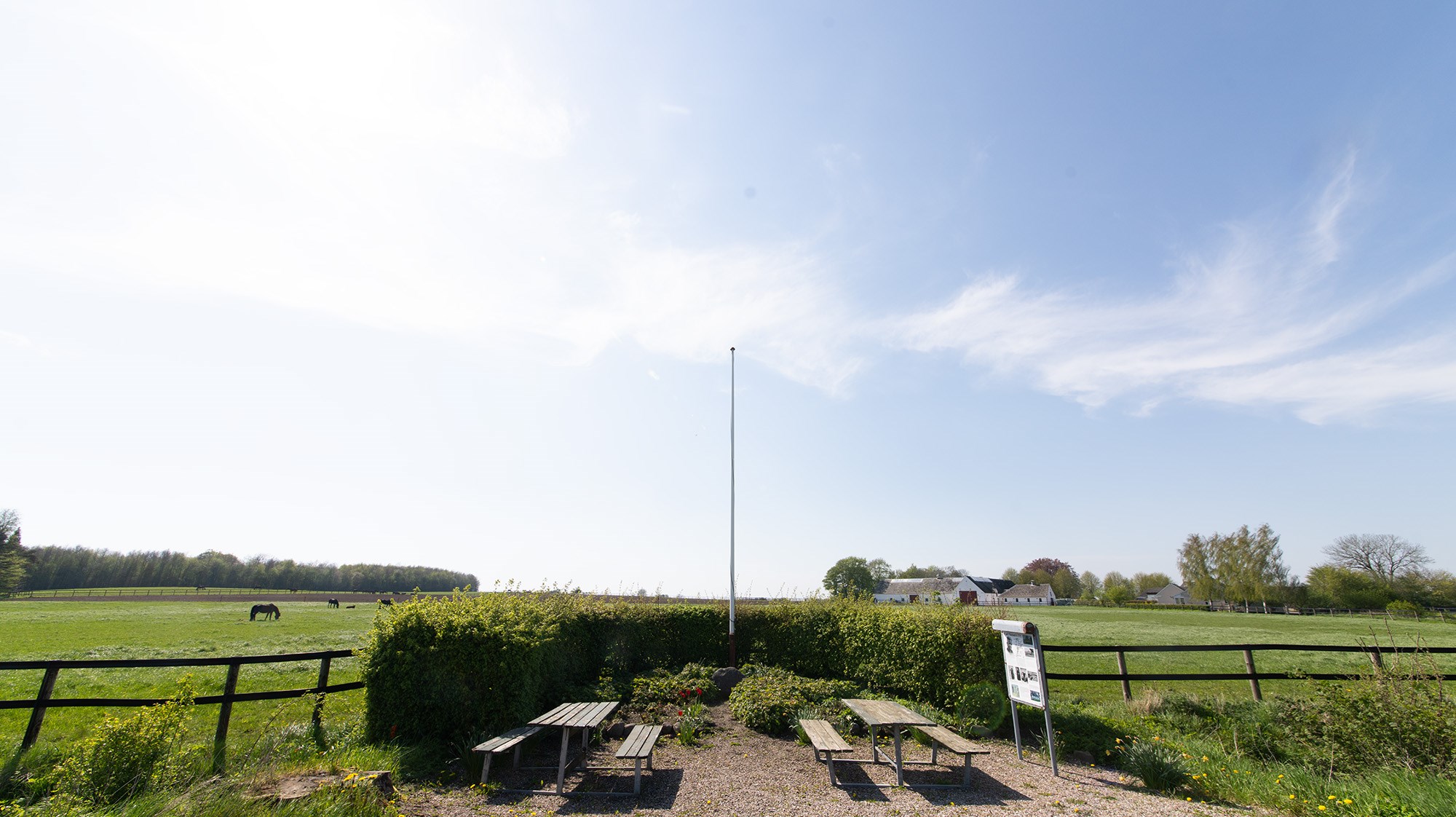
Monument and rest area at the birthplace site
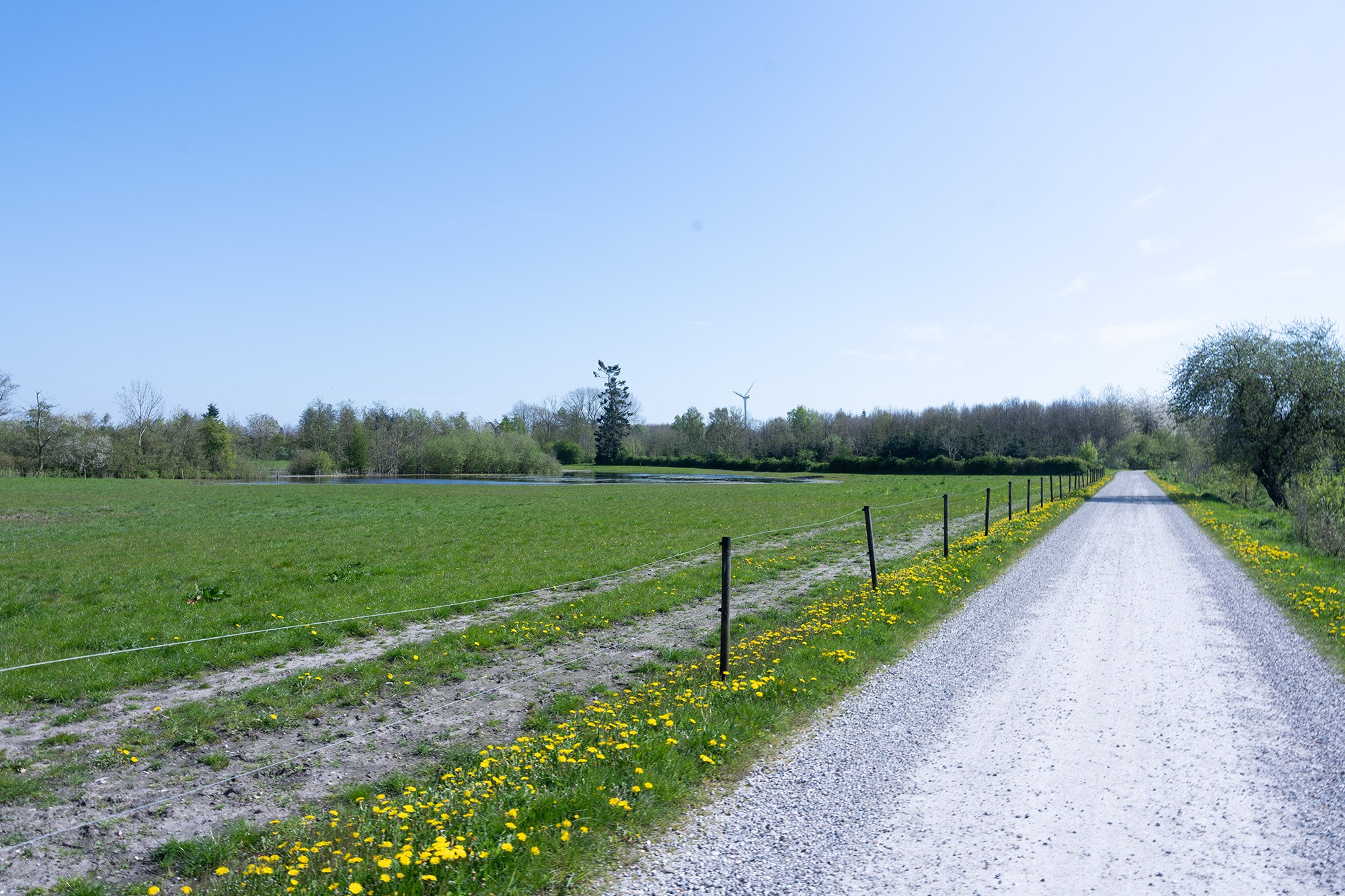
Landscape around the birthplace site
Nielsen’s Grave
[When my sister died at the age of 14] the black coffin made a stronger impression on me than her death itself. When soil was thrown into the grave and hit the lid of the coffin with a hollow sound, I felt extremely uneasy. Everyone was crying.
Finally, back in Copenhagen, the author visited Nielsen’s grave. In the Vestre Cemetery near the city centre, there is a large gravestone where he rests with his wife Anne Marie and eldest son Hans Bjørge (the gravestones in the foreground on the left and right, respectively). Although it was a busy three-day itinerary, the author was able to trace Nielsen’s footsteps from birth to death.
The author thanks much to Mr. Akitoku Nakai, without whose article (in Japanese) finding the gravesite is almost impossible.
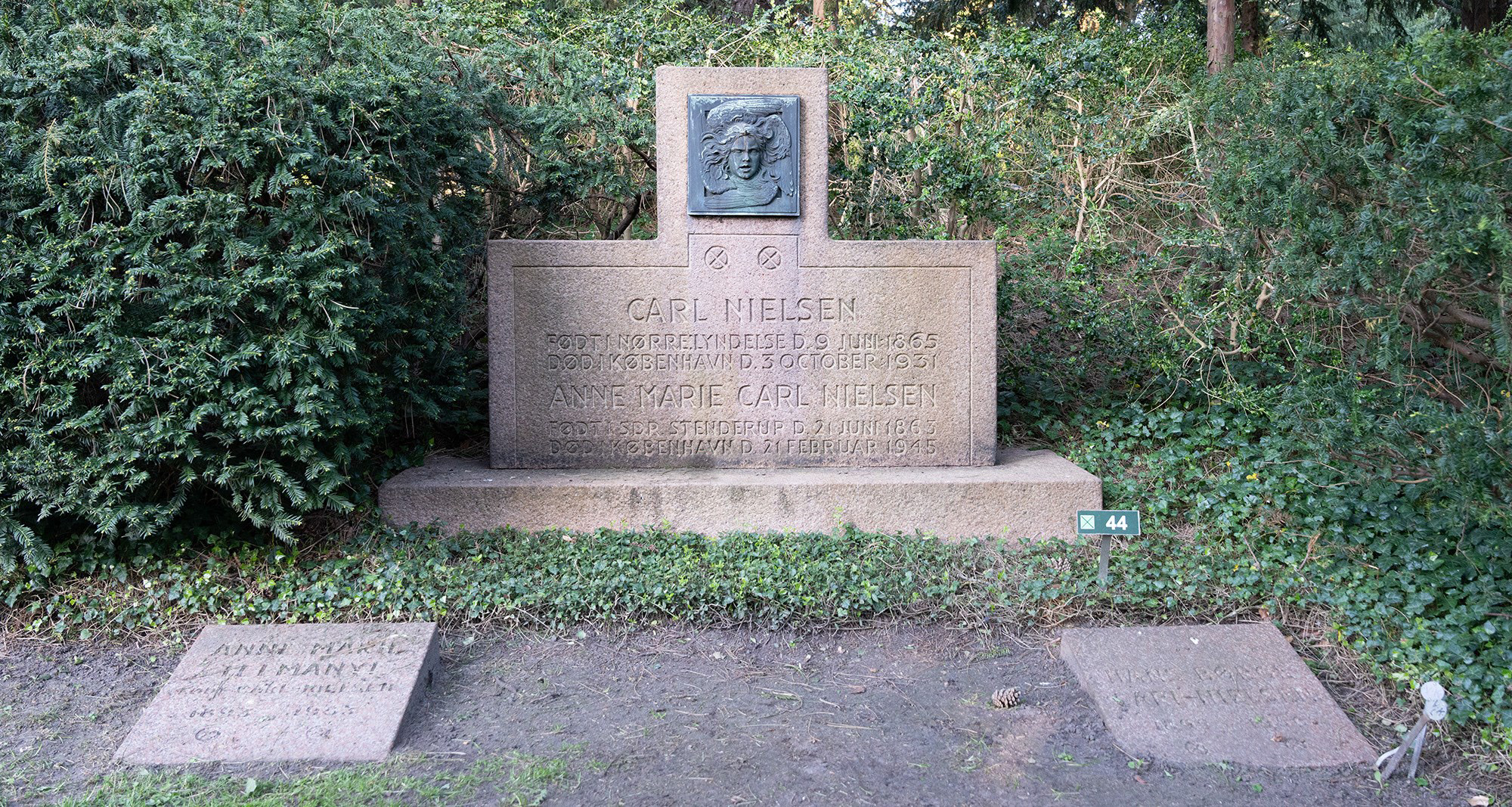
Nielsen’s Gravestone
Nielsen Statue in Copenhagen
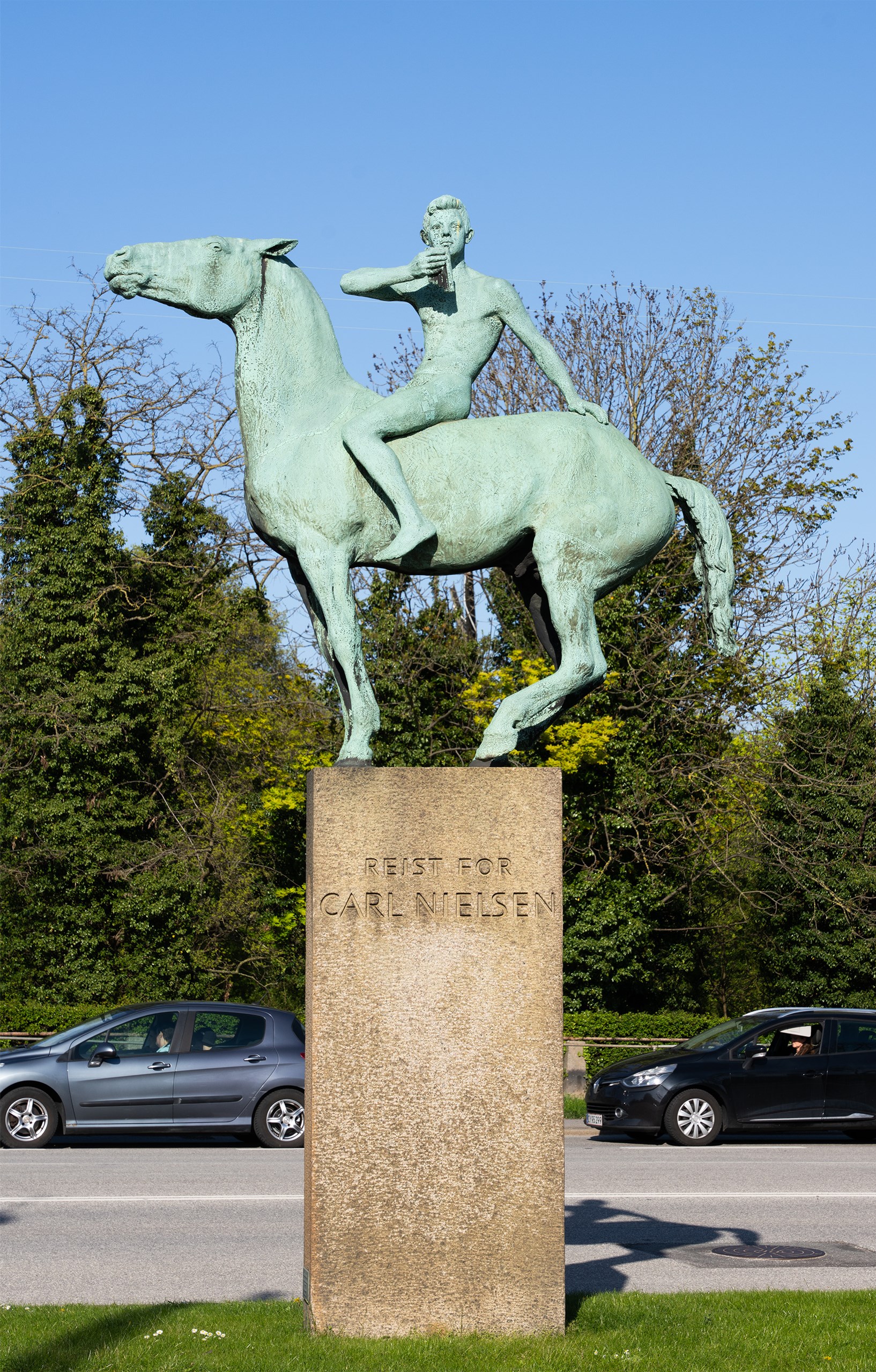
Nielsen Statue by his wife, Anne Marie Carl Nielsen
Recommendation for a Trip to Denmark
Apart from the Nielsen Museum, Odense has the Andersen Museum (to the general public which is more famous than Nielsen, allowing you to enjoy the world of Andersen’s fairy tales with all your senses), and Denmark’s largest Railway Museum (with exhibits such as a Wagon-Lit car you can enter, a mini train you can ride for free, and an expansive outdoor exhibit of a large rail yard you can freely walk around), and the music library attached to the station. There are also beautiful old Nordic architectural streets near the station and a large park on the outskirts where you can enjoy nature. In Copenhagen there are the Royal Library and the National Museum, where you can learn about Nordic culture from prehistoric times. The author hopes the readers will also enjoy a trip to Denmark.

Outdoor exhibition of Danish Railway Museum
Map
- 1. Natural park
- 2. Intersection with the highway
- 3. Odense city boundary
- 4. Bramstrup farm
- 5. The elementary school Nielsen attended
- 6. Childhood home
- 7. Sortelung (birthplace site)
